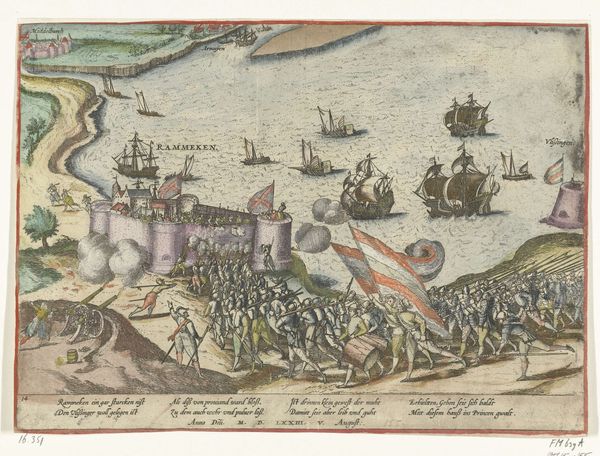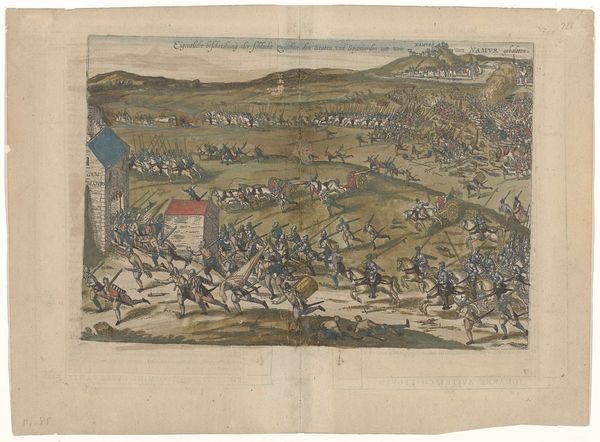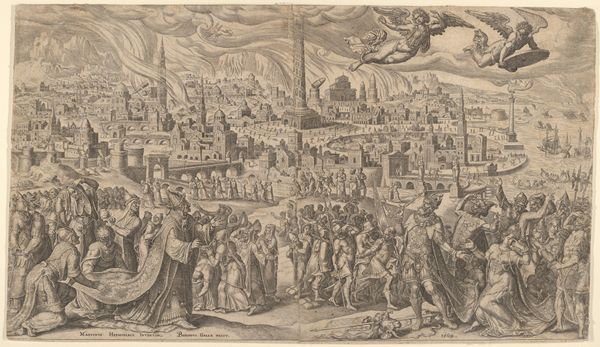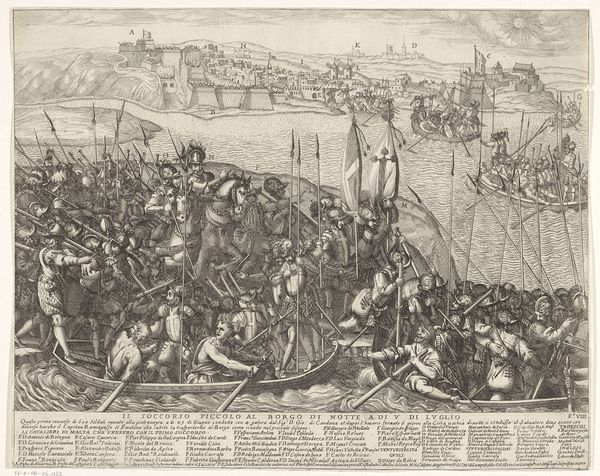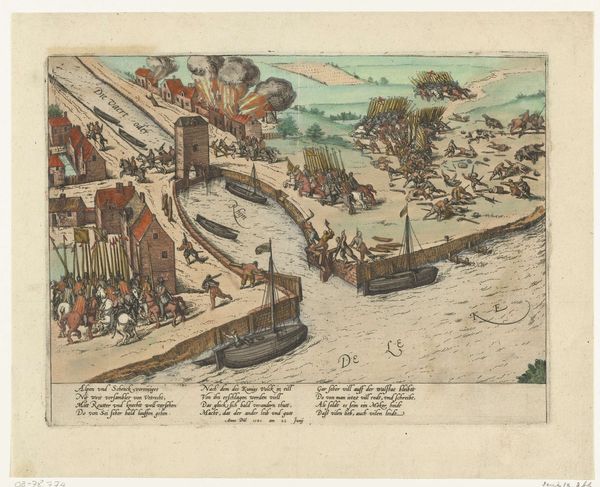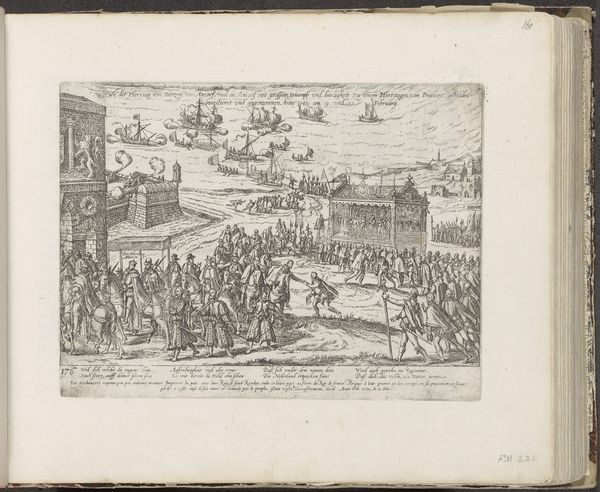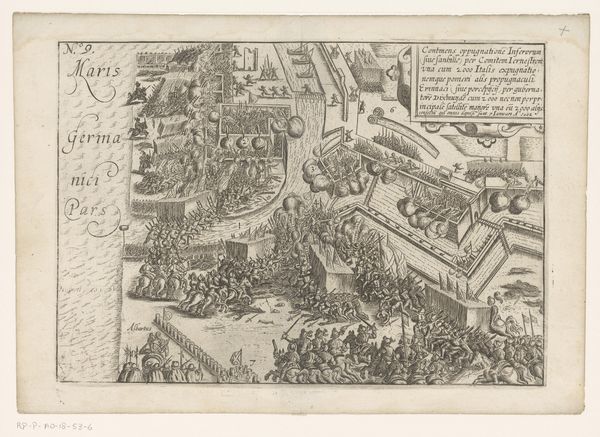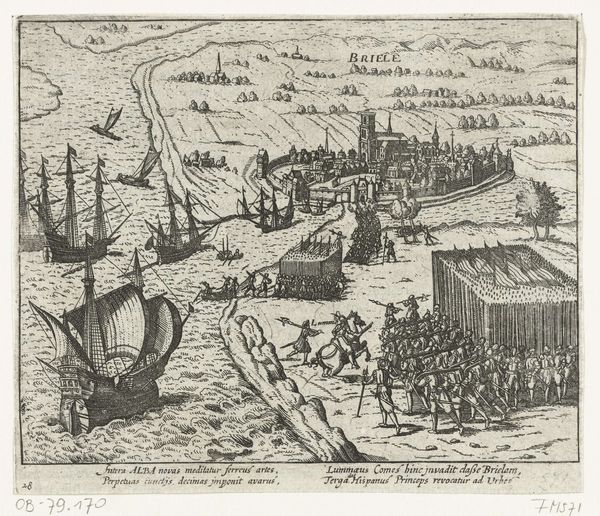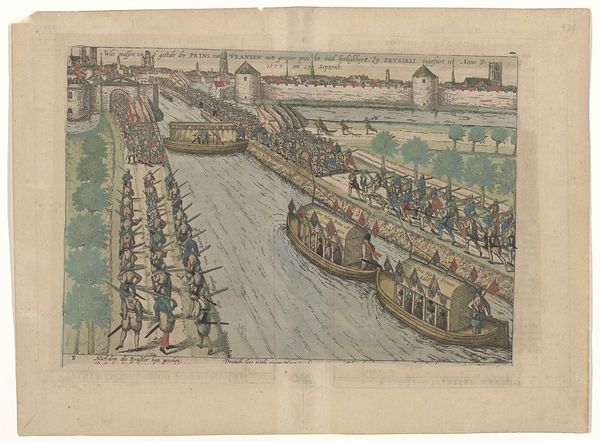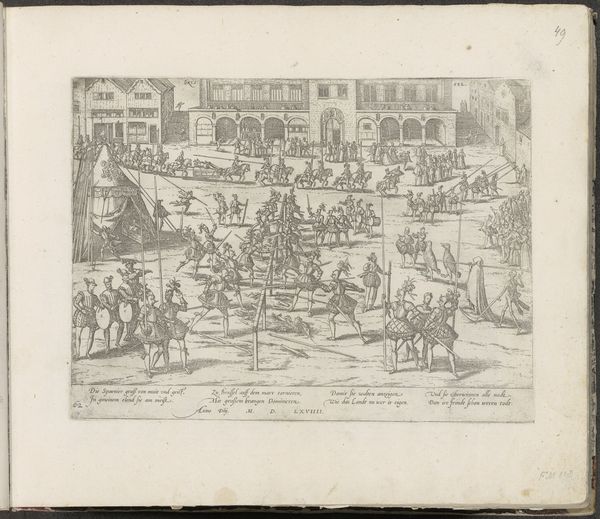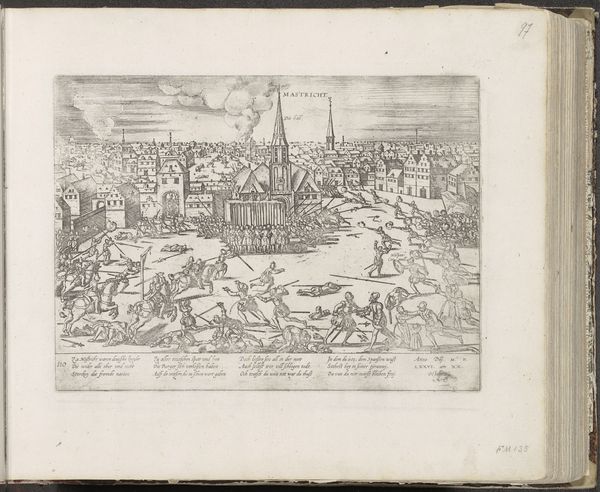
Dimensions: height 266 mm, width 371 mm
Copyright: Rijks Museum: Open Domain
Curator: This is Frans Hogenberg's "Inname van de schans IJsseloord bij Arnhem, 1585," an etching and engraving made around 1588. It's currently held at the Rijksmuseum. Editor: What strikes me is the sheer density of information. The artist's use of line creates a field of action. It feels almost like a map, detailing every soldier and ship, collapsing space and time into a single plane. Curator: Indeed. These prints were not merely decorative; they served a vital role in shaping public perception of current events. The depiction of the siege of IJsseloord offered a perspective on the Dutch Revolt against Spanish rule, a pivotal moment in Dutch history. The composition teems with symbolism: the fortified structure, the ships in the river, the charging soldiers. Each element speaks to the larger narrative of conflict and resistance. Editor: Absolutely. And notice how the artist organizes chaos into comprehensible order. The opposing forces are carefully delineated, creating visual rhythms across the page. Color, applied selectively, also aids this purpose, perhaps representing different allegiances or outcomes. The etcher’s command over the medium is evident in the textures and varying line weights. Curator: Consider the psychological impact. It’s not just a record of facts; the artist evokes a sense of intense struggle. Flags function almost as characters, communicating not only identity but ambition and territorial desires. They guide your eye across the composition, punctuated by billowing gunpowder clouds which represent the chaos and drama inherent to war. Editor: What endures is this tension between precise observation and stylized rendering. Each soldier is identifiable, yet collectively, they dissolve into an abstraction, underscoring the dehumanizing aspects of war itself. Hogenberg compels you to dissect his visual field. Curator: Seeing this work reminds us of how images have long served as powerful tools for communication and remembrance. These prints were key components of news dissemination in an early, globalized world, each battle serving a larger call for identity. Editor: Agreed. There’s something deeply compelling about experiencing an historical record reframed by design itself, even after all this time.
Comments
No comments
Be the first to comment and join the conversation on the ultimate creative platform.
